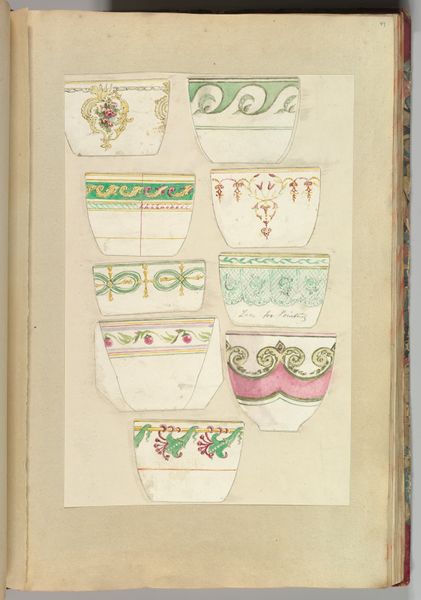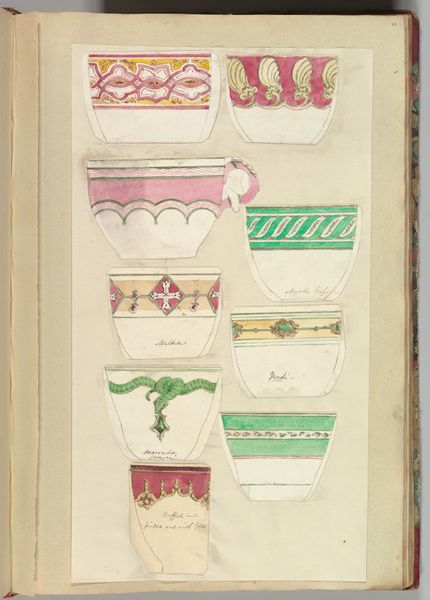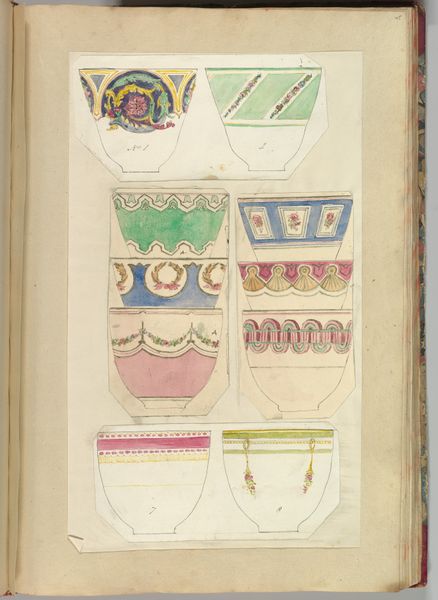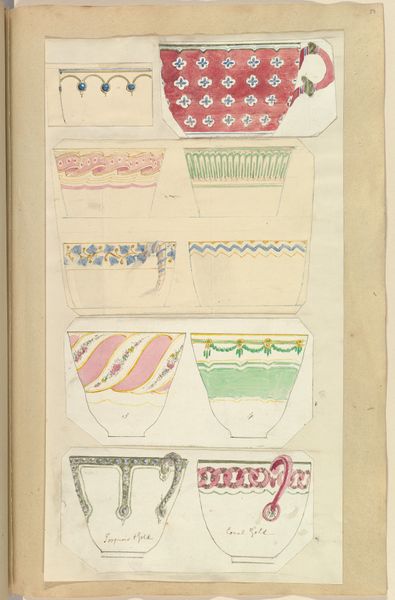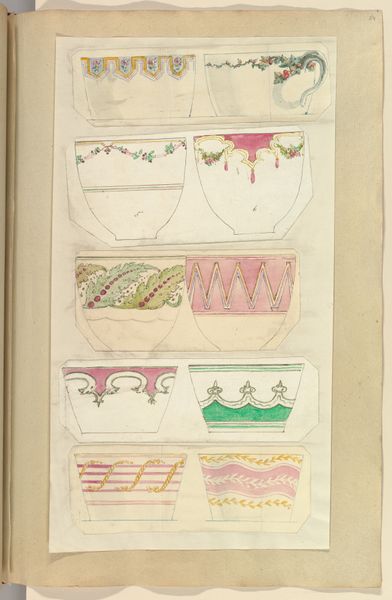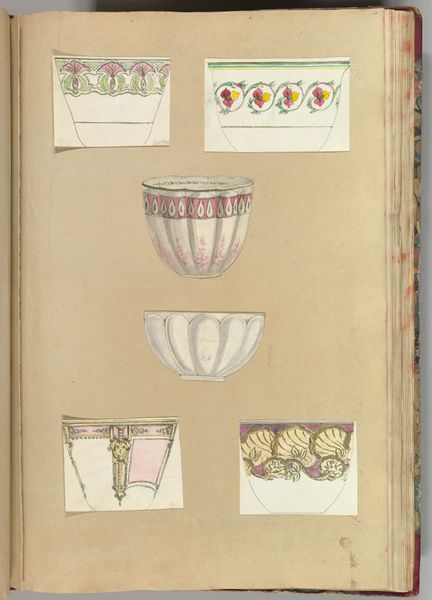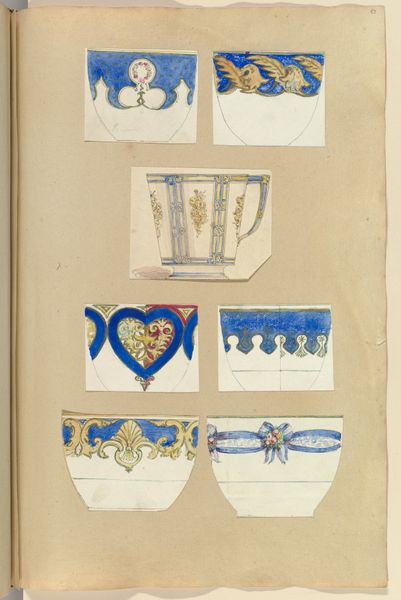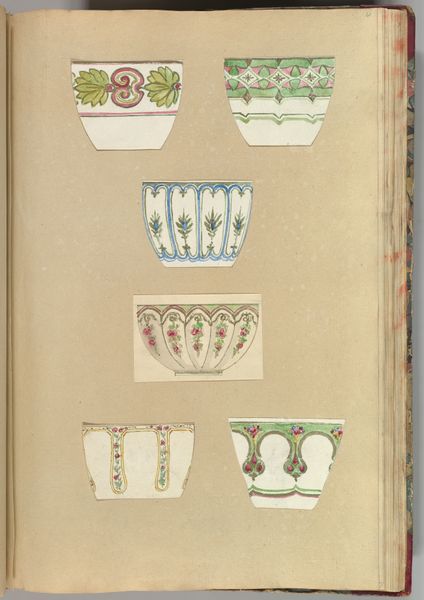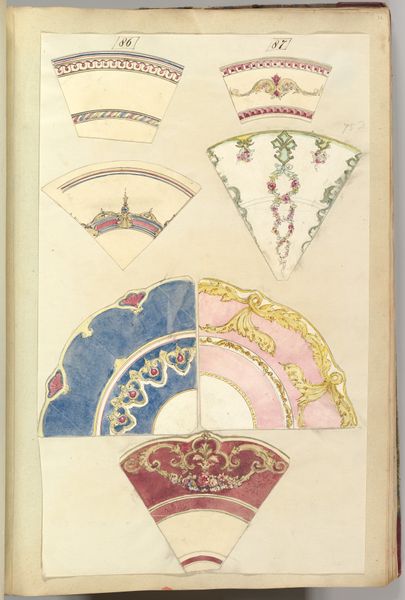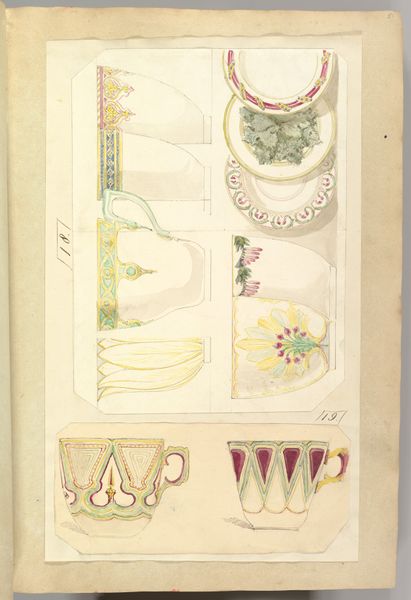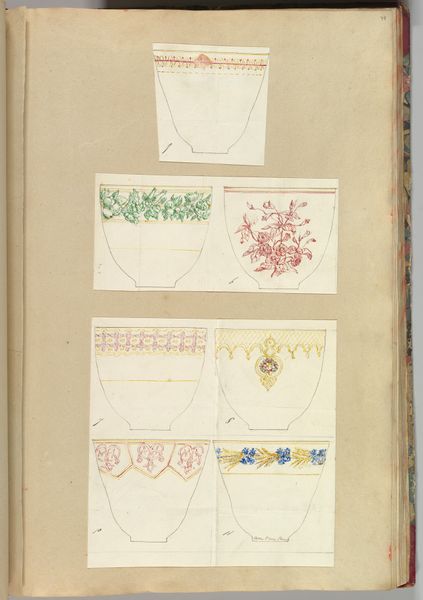
drawing, coloured-pencil, print, paper, watercolor
#
drawing
#
coloured-pencil
# print
#
paper
#
watercolor
#
coloured pencil
#
romanticism
#
decorative-art
Dimensions: sheet: 16 3/4 x 11 7/16 in. (42.5 x 29 cm)
Copyright: Public Domain
Editor: Here we have Alfred Henry Forrester’s "Eight Designs for Decorated Cups," dating from 1845 to 1855, rendered in watercolor, colored pencil, and print on paper. The designs are so delicate and varied. What strikes you most when you look at this page? Curator: I’m drawn to the inherent tension within these seemingly innocent designs. Consider the context: mid-19th century England, a society deeply entrenched in class distinctions and colonial exploitation. These delicate cups, meant for the consumption of tea, a product heavily reliant on exploited labor from colonized lands, become symbolic of that inequity. Editor: So, the cups aren’t just pretty objects? Curator: Exactly. Think about who would have been using these cups. It’s the burgeoning middle and upper classes, displaying their wealth and refinement, often oblivious to, or actively complicit in, the systems that allowed them such comforts. The very act of consuming from such ornamented objects is an act laden with political implications. Where did the materials for the colored pencils and paints originate? How was the paper manufactured, and who labored to create it? Editor: That gives the designs a totally different feel. I was initially charmed, but now I see a more complex story. The ornate detail almost feels like a way to mask the underlying issues. Curator: Precisely! The aesthetic beauty serves as a smokescreen, obscuring the harsh realities of the time. Do you see certain designs as perhaps hinting at some veiled acknowledgement? The bottom left, perhaps, feels the most overtly 'earthy.' Editor: Now that you point that out, the contrast between the bottom two registers very strongly. It feels very intentional in that sense. This has really changed my perspective. I’ll never look at a teacup the same way again. Curator: And that's the power of art – to provoke, to question, and to unveil the layers of history and social dynamics hidden within the everyday.
Comments
No comments
Be the first to comment and join the conversation on the ultimate creative platform.

